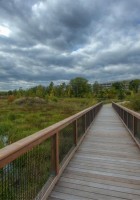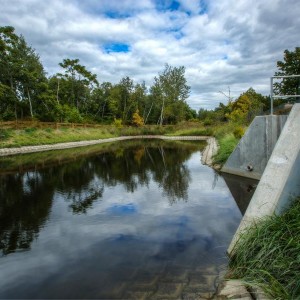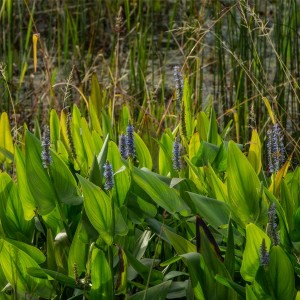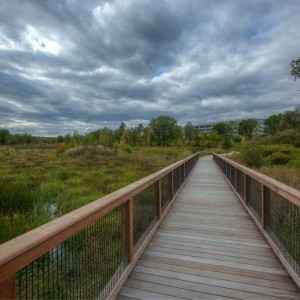Location: Cambridge, Massachusetts, United States
Status: Complete
The new wetland is an ecological filter with physical and biological treatment. In the first stage, fine sediment is allowed to settle in an articulated concrete block forebay where the resulting sediment is trucked out for disposal. Storm water then winds its way through a vegetated swale before entering the main basin where wetland biota remove nutrients and other pollutants. This journey improves water quality at the wetland’s outlet to the Little River and further downstream in the Alewife Brook.
The wetland also provides storm water storage and is surrounded by a six-foot earthen berm designed to retain a 10-year event. A series of passive storm water management devices (bending weir, vortex throttle, downstream level controller, and multiple flap gates) optimize storage by regulating water levels and flow rates in upstream pipelines. The pipelines also feature BMP catch basins, flushing systems and deep sump manholes to capture grit and floatables.
The 3.5-acre wetland is sited in the Alewife Reservation, conservation land that was once noted by 19th-century naturalist William Brewster as “The Great Swamp”. The design included environmental engineering to minimize the construction and long-term impact to the ecology and aesthetics of this valuable open space. A significant regulatory coordination effort was undertaken to achieve a consensus on the wetland’s function, configuration, and impact on hydrology and water quality.
The wetland was also conceived to add biodiversity and encourage the return of native wildlife. Over 100,000 wetland plants stabilize the landscape, with trees and upland species placed along a bike path, visitor’s entry way and peninsula. The site now features habitat such as riparian woodland, shrub swamp, emergent marsh, wet meadow and open water. Animals recently sighted include alewife, swan, heron, mallard, bullfrog, snapping turtle, deer and muskrat. Visitors have access to a half-mile long boardwalk with panoramic views, a platform overlooking a man-made oxbow at the Little River, and an amphitheater with educational signage.
This project is a showpiece of 21st century ‘green technology’ and a benchmark for sustainable integration of storm water infrastructure with the natural environment.
- Over 3.5 acres in size; acts as “final polish” of urban stormwater before entering Little River
- Effective for removing suspended solids, heavy metals and nutrients
- Designed to accommodate a 10-year storm event (10.3 acre-feet of storage)
- Water quality monitoring of phosphorus, nitrogen, coliform, at outlet structure and forebay as well as on CambridgePark Drive from the Box Culvert before it enters the Forebay
- Mosquito habitat lessened thru water movement and habitat creation (bats, dragonflys, etc…)
- Creation of a new educational and passive recreational amenity
Latest in the News:
City parks, Clean water: Making great places using green infrastructure
Great Swamp Controls Combined Sewer Overflows




